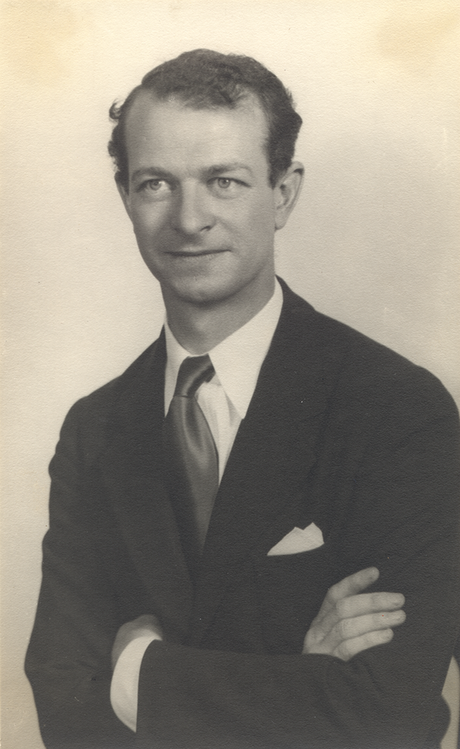 Portrait of Linus Pauling, 1930s
Portrait of Linus Pauling, 1930s[Exploring the theory of resonance and the Soviet resonance controversy. Part 2 of 7.]
Linus Pauling was able to develop his resonance theory because of his belief that quantum mechanical principles could be applied to molecular architecture. And even though the theory did not always predict chemical structures and bond strengths with supreme accuracy, Pauling worked hard to defend his ideas. This firm belief in resonance permeated many aspects of Pauling’s work for years to come, and the imperative to defend it arose in more than one instance as well.
Resonance theory informed the two schools of thought then-prevailing for chemists interested in quantum mechanics and the chemical bond. These two modes of thinking were the Valence Bond (VB) theory and the Molecular Orbital (MO) theory. And while both theories used the concept of resonance to explain molecular structure, neither was able to predict all structures all of the time.
One might assume that this variability would have troubled Pauling, but if so, it did not cause him to falter in his conviction that resonance was the best tool available for accurately describing states of matter on the molecular level. Perhaps because of this, Pauling ultimately preferred the VB theory, for which hybridization of orbitals is the mechanism by which molecular shape is explained. That said, Pauling was also aware of the utility of MO theory and, in at least one instance – a study of cyameluric acid – he was forced to use MO theory to explain the structure, having concluded that his application of VB theory was inaccurate.
But incidents like this did not weigh heavily on Pauling, who remained very confident in the soundness of his ideas. Notably, in his 1939 book, The Nature of the Chemical Bond, Pauling explained away the incongruities between VB and MO theory and upheld resonance by stressing that, “the convenience and value of the concept of resonance in discussing the problems of chemistry are so great as to make the disadvantage of the element of arbitrariness of little significance.”
While he took pains to press the usefulness of resonance theory, Pauling sometimes found it more difficult to explain it vagaries. On a conceptual level, one of the theory’s biggest hindrances to acceptance was its statement that the “correct” structure of a molecule is a hybrid of all possible isomers of the molecule. This effectively meant that, in a resonating structure, all possible isomers exist simultaneously, an idea that proved confounding for many. Prior to resonance, the conventional wisdom was based on August Kekulé’s description of rapidly changing isomers. Pauling was sure that, in order for resonance theory to work, the idea of isomers shifting from one to another had to be abandoned.
In making the case for resonating structures, Pauling wrote that
a substance showing resonance between two or more valence-bond structures does not contain molecules with the configurations and properties usually associated with these structures.
Of the various Kekulé structures, Pauling suggested that, “taken together, [they] provide a rough description of the wave function of the molecule in its normal state.” The implication, of course, was that resonance theory offered a more precise set of tools for understanding molecular architecture, once one was ready to clear a few conceptual hurdles.
 Christopher K. Ingold
Christopher K. IngoldIn time the initial sense of confusion was overcome, and the utility and brilliance of Pauling’s resonance theory made it widely accepted. While some saw resonance as heralding a promising new direction for the application of chemistry, others found the theory appealing simply because it seemed to solve so many problems. Early praise came in 1933, when the esteemed British chemist Christopher K. Ingold declared the theory as having effectively resolved lingering questions about the stability of aromatic compounds.
Ingold’s colleague Nevil V. Sidgwick also became a big supporter of resonance theory. Sidgwick was a well-respected scientist, and his endorsement of resonance helped to cement its status as a leading model for understanding chemical structures. A few years later, in his 1944 book, The Theory of Resonance and its Applications to Organic Chemistry, University of Chicago professor George Wheland confirmed resonance as being
the most important addition to chemical structural theory that has been made since the concept of the shared-electron bond was introduced by G.N. Lewis.
Pauling too believed in the utility of resonance throughout his life. He argued in particular that the theory was especially well-suited to “aromatic molecules, molecules containing conjugated systems of double bonds, hydrocarbon free radicals, and other molecules to which no satisfactory single structure in terms of single bonds, double bonds, and triple bonds can be assigned.” He also believed that “resonance provides an explanation of the properties of many inorganic molecules. For example, the carbon monoxide molecule.” Pauling likewise suggested that resonance theory “permitted the discovery” of the alpha helix and associated models comprising “the most important secondary structures of polypeptide chains in proteins.”
In time, resonance theory would become universally used and applied, but not before Pauling was forced to wrestle with an unusual conflict coming out of the Soviet Union. This controversy, which lasted for nearly five years, will be introduced in our next post.
